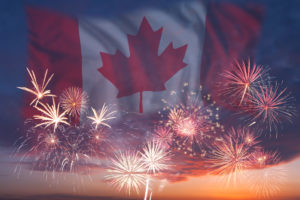Read the Following Selection
Read the following selection, or click on the play button below to listen aloud.
The History of Canada’s Government

Canada’s form of government is very similar to the British parliamentary system.
Did you know the Dominion of Canada was formed in 1867? Dominion is the word that means a self-governing nation within the British Commonwealth. When Canada first became a country in 1867, there were only four provinces established: New Brunswick, Nova Scotia, Ontario, and Québec. With the addition of the new territory of Nunavut in 1999, Canada now has 10 provinces and 3 territories.
In 1867, the British Government agreed to allow the four colonies of Quebec, Ontario, Nova Scotia, and New Brunswick to organize as provinces under one government, while staying loyal to Britain. This union was called Canada’s confederation. Since then, six additional provinces and three territories have joined Confederation to form the Canada we live in today.
During the time of confederation (in the 1860s), the various colonies were experiencing many problems. For example, the colonies wanted to sell their goods more easily to different markets. There was also a big concern that the colonies needed protection from an American invasion. The colonies were scattered over broad areas of land and had many differences, such as language and religion. However, the colonies wanted to join to form a country with a federal government system.
When the colonies joined in 1867, there was a discussion on how the new country should be run. As a result, a document was created that outlined rules for Canada’s new government. This document is called the British North America Act. The British Government approved the Act on March 29, 1867, and the Dominion of Canada was created on July 1, 1867. Sir John A. Macdonald became Canada’s first prime minister.
Canada’s form of government is very similar to the British parliamentary system. The Canadian government’s body of laws and federal government system is made of written and unwritten rules. The written rules are based on the Constitution Act of 1982, which includes the BNA Act of 1867. The unwritten rules consist of the parliamentary system of government modelled after the one in Great Britain. Canada still has close ties with Britain and is a member of the British Commonwealth of Nations. The British Commonwealth of Nations is a way to connect to Great Britain and its former colonies. Canada still recognizes the British monarch as its head of state.
Now, show what you know!
Complete some questions about the reading selection by clicking “Begin Questions” below.









